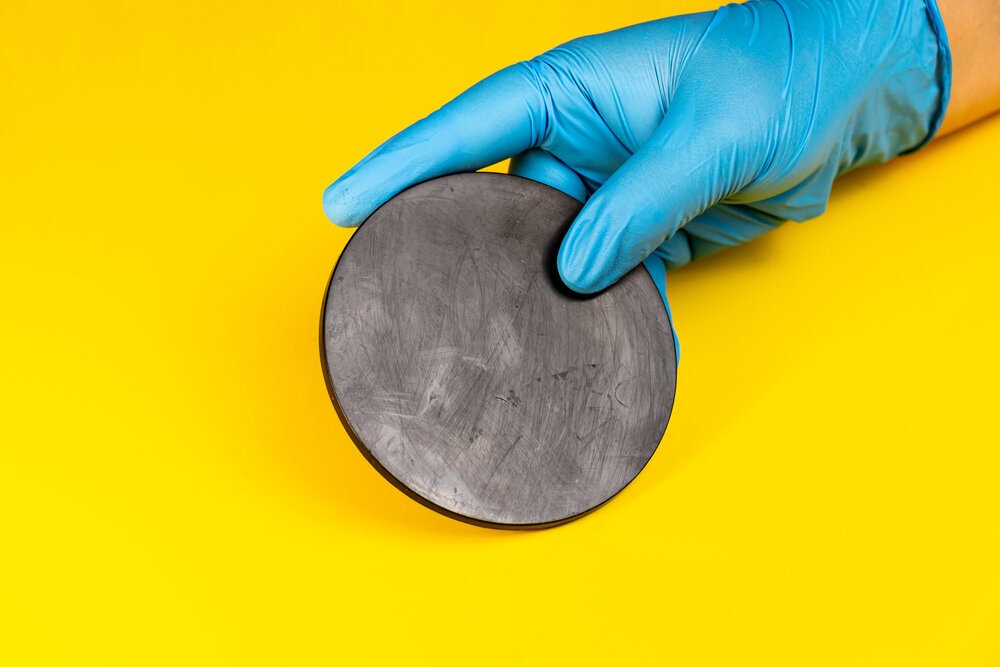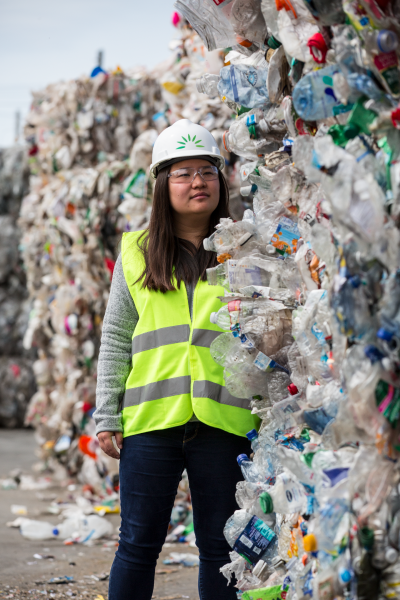BioCellection’s Chemical Recycling Process Backed by GreenWaste Recovery and City of San José

Recycling tech startup BioCellection has created a chemical process to break down polyethylene (PE) waste into ‘building blocks’ to incorporate in multiple products made of up to 50 percent recycled monomers. The Menlo Park, Calif.-based company is targeting the footwear, labels and adhesives, electronics, and automotive industries, among others.
BioCellection so far has buy in from MIT Solve, which is an initiative of the Massachusetts Institute of Technology; as well as from GreenWaste Recovery and the City of San José. The two latter entities supported a pilot to finetune the technology, and they plan to back a scaleup.
“We turn plastics into chemical intermediates, putting low-grade PE through a process where it is broken down into small chemical building blocks in less than 6 hours at less than 200 degrees Celsius,” says Miranda Wang, co-founder and CEO of BioCellection. The fast process and low heat save on energy and emissions.

Miranda Wang out in the field.
“We break them down into short enough chains to be able to make a variety of products, and we rebuild them into material that is of a virgin quality. We want to provide an option for all kinds of brands and consumers to be part of a circular economy,” she says.
Chemical recycling provides an alternative to mechanical recycling, with the latter having economic and technical limitations, for instance it is expensive and difficult to deal with contaminants like grease, dyes, ink and fillers, which can be more easily removed through chemical recycling. Ultimately plastics’ carbon structure is broken down to be able to build high-value products, while keeping chemicals in the plastic in play to support a circular economy.
Wang distinguishes BioCellection’s proprietary process, called Accelerated Thermal Oxidative Decomposition (ATOD) from other chemical technologies, claiming other thermal chemical processes leverage higher temperatures, generating oil that must be processed, which involves more steps, more carbon emissions and generates toxic waste that is mitigated via ATOD.
She explains the key to successfully accelerating the process: low-grade plastics are inclined to break apart through oxidation, and they tend to get oxidized once additives are degraded. So BioCellection developed a chemical method to mimic this pathway, but sped up the process to rapidly break down the carbon chain.
“So, we created a way to make the chemical building blocks using plastic waste, not fossil fuel, in less than 6 hours, without having to go to oil. And the products are versatile,” Wang says.
GreenWaste Recovery provides collection services to more than 310,000 residences and businesses and has a materials recovery facility (MRF) that processes materials for more than 40 jurisdictions.
GreenWaste recently completed a small pilot with BioCellection in conjunction with the city of San José. The collection and processing company provided the feedstock from its curbside processing line as well as $120,000 in funding, matching funding provided by the city of San José.
“The amount of output BioCellection produces on a quantity-for-quantity basis is a significantly higher-value material than what anyone else we know of is doing in chemical recycling,” says Emily Hanson, chief strategy officer for GreenWaste Recovery.
Now GreenWaste is exploring ways to prepare feedstock to minimize the need for BioCellection to do preprocessing.
“We are trying to figure out what contamination their system can accept, with the ultimate goal being to maximize the efficiency of how we prepare to minimize the need for BioCellection to do more than feed material into the machine. So, we are looking at providing material but also doing a feedstock prep handshake,” says Hanson.
GreenWaste is considering providing BioCellection space so the tech company’s processing unit and GreenWaste’s processing facility can be co-located. The waste company needs to determine if it can do this within its existing permit.
“We vetted the technology through our partnership with the city of San José, then wanted to further our partnership with BioCellection. On the chemical side we have seen other recyclers taking low-value waste and making low-value material. But BioCellection is upcycling lower-value materials to produce virgin quality. And their business model is economically viable,” says Hanson.
The City of San José has a goal to achieve zero waste by 2022. Its city council has also directed San José to find recycling solutions to market challenges through partnerships, and to explore a circular economy, which is why San José’s Environmental Services Department (ESD) invested $120K in the pilot.
“Two of San José’s strategies to achieve zero waste are to reduce waste to landfill and to increase the amount of materials that are beneficially reused. Reducing waste to landfill will require innovative technology to address non-recyclable mixed plastics and plastic-paper composites,” says Valerie Osmond, deputy director, Integrated Waste Management, City of San José Environmental Services Department.
“If this technology produces a solution for problematic plastic residue, we would hope that our recycling facilities would invest in it and that we would see lower residue disposal costs, and an environmental benefit from fewer tons being landfilled and a reduction in greenhouse gas emissions,” she says.
BioCellection’s ATOD was a finalist in MIT Solve’s global Circular Economy Challenge, which drew over 300 submissions.
“We were looking for innovations that eliminate waste, whether through designing it out of business models or, like BioCellection, processing it for continual reuse,” says Alexander Dale, lead, Sustainability Community at MIT Solve.
BioCellection was chosen after being vetted by technical experts in plastic waste and recycling. Private sector leaders from the plastic industry were also involved to help establish scalability and understand partnership potential.
The startup is nearing its last research and development phase and is working on engaging with stakeholders to bring products to market. Wang says she is currently working on a polyurethane product to incorporate into shoe soles—and is in discussions with stakeholders in the foot apparel industry about investing in it.
“We have labs where we are developing products. [Potential customers] gave us requirements and we are working on meeting those needs,” she says.
About the Author
You May Also Like




.png?width=300&auto=webp&quality=80&disable=upscale)